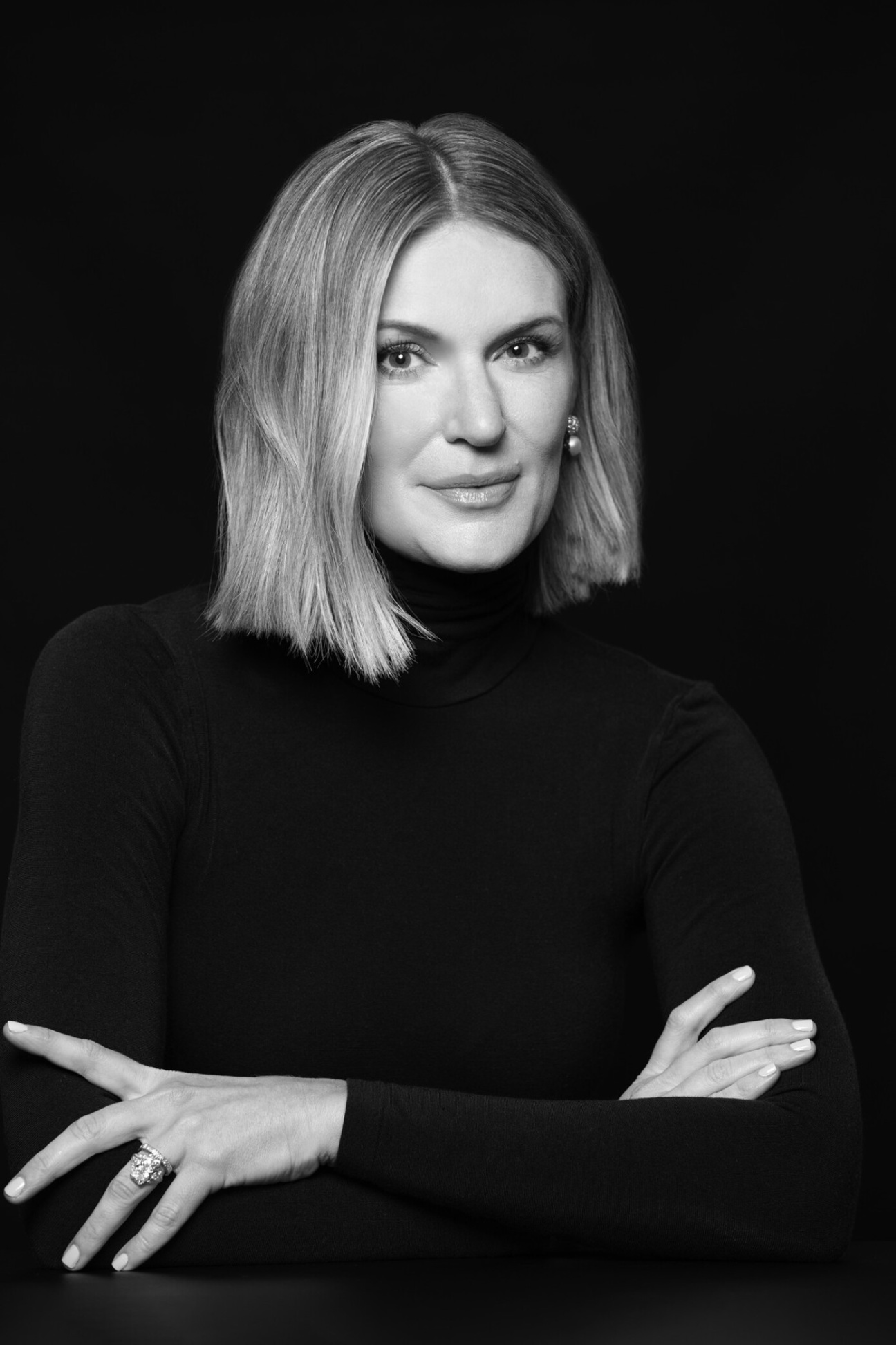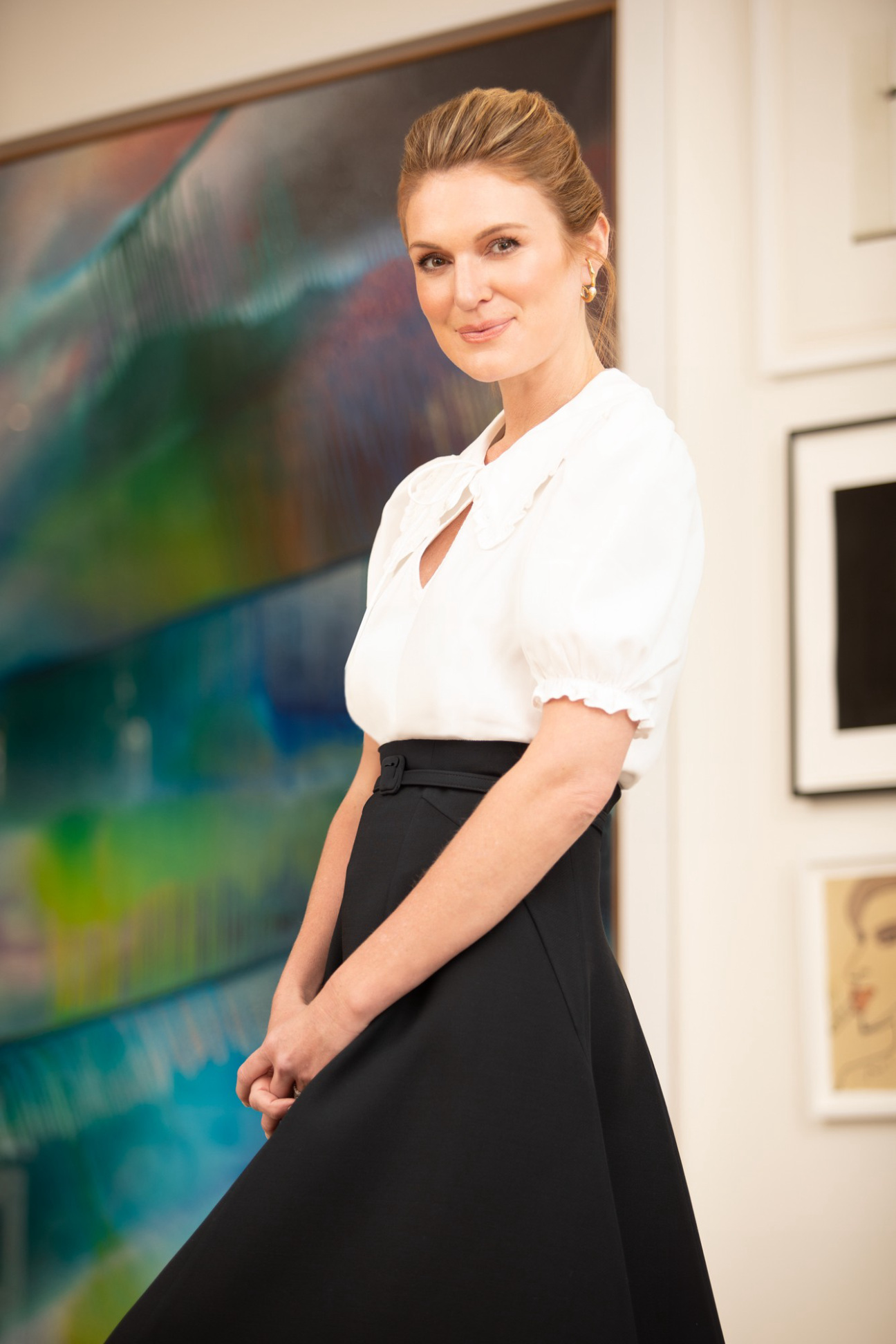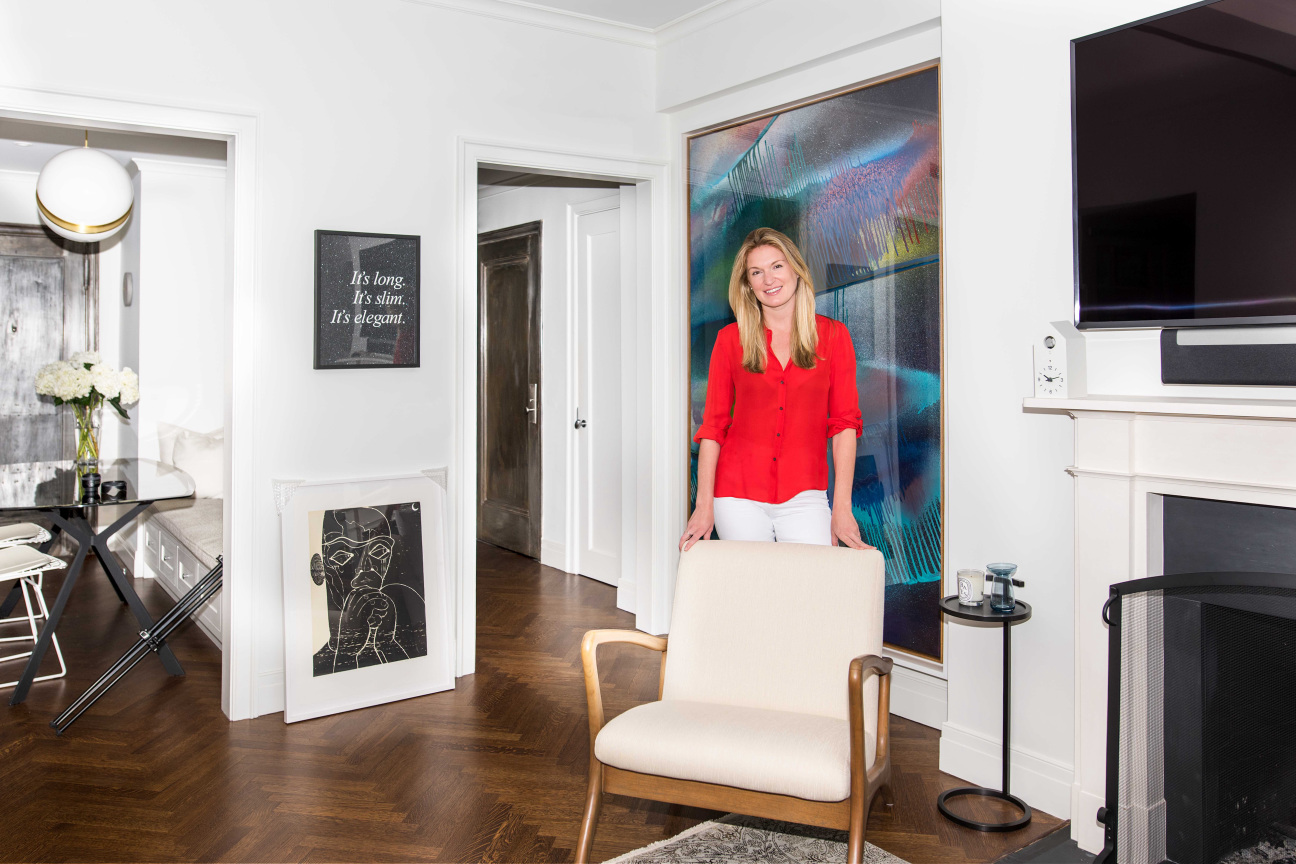
“I'm new, I'm kind of just diving in. I feel like I'm on a listening tour, both of the staff and a board to say, ‘What are you excited by? What are you nervous about? What are you interested in?’” Sarah Arison says. When I reach her, the arts patron is in the midst of a move and back-to-school prep for her two daughters. But we’re calling about a life-shaping moment of a different ilk: She’s just been announced as the latest president of MoMA’s Board of Trustees.
The role may be new, but Arison has been part of the greater MoMA family since 2017, when she began serving as co-vice chair of MoMA PS1 alongside the legendary Agnes Gund, whose chair position she took over in 2020. In the latter role, she saw the Long Island City museum through the depths of a pandemic, the resignation of a director, and the arrival of a new one (the esteemed Connie Butler) last fall.
At 39 (Arison will turn 40 during this year’s Art Basel Paris), she is a seasoned art world figure and a serial board member (the Brooklyn Museum, the Kitchen, and American Ballet Theatre, to name a few) known for her staunch commitment to artists, her holistic vision for cultural institutions, and her close ties to their staffs. It’s no secret that the roots of her patronage run deep: Her grandparents founded YoungArts three years before Arison was born and established a family foundation, both of which she leads today. But the brio and tenacity with which she has devoted herself to the calling make it clear that her attachment is more than an inherited obligation—it’s personal.
As she heads into a busy fall, Arison took a moment to reflect on her path to the presidency, share her manifesto for MoMA, and set the record straight on the reality of art patronage.

CULTURED: You have art patronage in your blood. Is there a lesson your grandparents imparted on you that feels especially relevant as you're taking on this role as the president of the board at MoMA?
Sarah Arison: One of the things they did that I now think about being a parent is how important exposure to the arts at a young age and throughout childhood is. You look at cultural institutions, and there can be such an intimidation barrier. When I think back to when I moved to New York [in my 20s], I was always comfortable buying a ticket to the ballet, walking into a museum, or walking into a Broadway show. Having [culture] be a consistent part of our lives set me up to be in a place where I could take advantage of it. Now being a mom, I’m thinking about how I can start exposing my daughters early so that they're comfortable too. [My grandparents] just did that so organically with us, and looking back, it was hugely important.
CULTURED: You were studying biology at Emory when you first got your taste of the art world. You went to a YoungArts gala in Miami with your grandmother during a school break. What do you remember about that moment?
Arison: It was really just to spend time with my grandmother. Then I guess one of the mothers of one of the winners somehow made the connection that I was in the family that founded the organization. She came up to me with tears in her eyes, thanking me for everything that my family had done for her son. [She told me] he used to come home and sit on the floor and draw, and she would yell at him to go do his “real” work, and that seeing him there being mentored by the greatest artists in his field, being looked at by universities for scholarships because of his artistic talent… She recognized that this was his real work.
YoungArts looks at artists at a time when nobody else is taking them seriously. When they say, “I wanna be an artist,” people are like, “Yeah, yeah, you're a high school theater kid, whatever.” There are very few organizations that will take a high school student and say, “Your talent and your dreams are real, and you should pursue them.” It really struck me that it wasn't just impacting the lives of the artists who are winners, but it was also affecting the perception of the value of artists in our society. If this mom could have her view of her child changed and the value of his passions transformed, what other impact could we have? We recently redid our mission statement, and it says, “Our vision is a world that embraces artists as vital to our humanity.” It’s the concept that the arts are not a luxury.

CULTURED: Do you remember any early relationships or conversations with artists that were pivotal for you?
Arison: I was 19 when I went to my first YoungArts gala, which means I was like two years older than most of the winners, max. It was astonishing to me to see what they had accomplished in the same amount of time on Earth that I had. I joined the board soon thereafter, and I actually feel like I've grown up with a lot of these artists. I think back to some of the winners that I met early on, like Samora Pinderhughes who went through YoungArts for jazz and from there has done literally everything. We were both going through college, then we were both getting our careers started, then he ended up doing a show at the Kitchen, where I'm on the board, and we did a talk together at MoMA PS1… We've been leading somewhat parallel lives, you know?
CULTURED: You mentioned joining the board of YoungArts at 19. How did being in that boardroom, in those meetings, shape how you think about leadership?
Arison: I don't think I weighed in for years because I was so intimidated. I really believe in listening. And that means to everybody—to other board members, to senior and junior staff, to the artist… We currently have at least six artist board members at YoungArts, because it's insane to be an arts organization where artists don't have a seat at the table. I also believe in hiring really great staff and letting them do their job. As a board member, it's your role to hire a director and then support them; it's not your role to tell them what to do—that can be a recipe for disaster.
CULTURED: Can you tell me a little bit about the conversation partners that have been crucial for you throughout your years in the art world? Whose taste or judgment do you trust the most?
Arison: Anne Pasternak [director of the Brooklyn Museum] has been an absolutely brilliant friend and mentor. What I love about her is that she's always willing to say and do what is right, even if it's gonna be unpopular, even if it's gonna get her dragged through the mud. It's been really amazing working with Glenn Lowry [director of MoMA]; he's obviously an absolute legend and is so thoughtful and steady. Being able to work with Elizabeth Alexander [president of the Mellon Foundation] and Darren Walker [president of the Ford Foundation], and having those conversations about what they’re seeing that they’re interested in and excited by is really fantastic.
Deana Haggag, who is currently at the Mellon, is one of those people who I think she's decades older than she is because she's so smart and so accomplished. Connie Butler, even though it's been less than a year since she started at MoMA PS1, is phenomenal. I loved working with Henry Timms at Lincoln Center. As far as peers, [there’s] my friend Michi Jigarjian. There aren't a ton of people my age who are in my position or able to do what I'm lucky enough to be able to do, and she is one of them. She's just an incredible partner in every way.
CULTURED: Do you remember any MoMA shows that shaped the way you think about art or really encapsulate it as an institution?
Arison: The Joan Jonas show that just closed was extraordinary. Ana [Janevski], the curator, did it while she had a newborn and toddler, and I’m just in awe. Then “Signals: How Video Transformed the World,” which was on last year. People have widely varying opinions on video art. It's hard to collect, it's hard to show—the fact that we didn't have more technical difficulties is such a testament to the team. But that was an epic show of what people may have thought to be a somewhat inaccessible topic. They contextualized it, and they gave it history.
There was the show that they did a few years ago that was all work that Aggie [Gund] had brought to the collection. To have that much of an impact on the collection of a massive institution blew my mind. I think about taking my first child who had just learned to walk to the Donald Judd show. She thought it was a giant playground, and I was completely panicked the entire time. Then I have to say, the “Greater New York” survey at PS1 is always one of my favorites because it's a place where I feel like I'm always discovering new artists, and there's this delightful New York-iness to it.
CULTURED: As you settle into this new role, where do you see MoMA heading in the next decade? What’s your MoMA manifesto?
Arison: This is for MoMA as well as all other cultural institutions. During the pandemic, we all pivoted to virtual programming because we couldn't have live audiences. Some did it better than others, but the audiences you were able to reach were astonishing. I remember with American Ballet Theater, we did a gala virtually and we had 40,000 people livestream attending. We're back in person now, thank goodness, and the numbers at museums are really showing that there's a desire to be back. But those virtual audiences were there with us through the pandemic. How do we make sure that, even as we're back in person, we're not leaving them behind? That goes to the whole question of audience development and really making sure future generations are seeing these institutions as places for them.
Another thing that has been amazing with MoMA in opening the new building is that the staff has done an extraordinary job at communicating, collaborating, and working together to make these really interesting, super integrated shows that bring pieces from all departments in. And you can kind of extend that to not pigeon-holing artists and giving them the freedom to push their own boundaries. I'm really interested in continuing that momentum and really being a leader in that field. One of the things I've loved is really building the relationship between MoMA and MoMA PS1. There is such an incredibly symbiotic relationship there, and both institutions get so much from the other. Connie coming in, having a decade ago already worked at MoMA and knowing a lot of the staff, that's perfect. So really building the connections there, making sure the curators are talking and exposing each other to different things that they're seeing, that’s a fun opportunity I'm excited to continue.
CULTURED: Is there something people misunderstand about art patronage that you want to set the record straight about?
Arison: Maybe there was a time in the past when this was the case, but there's a perception of being on a board as putting on a cocktail dress, going to the gala, writing a check once a year—that’s it. On every board I can think of, the people that are on the board give so much. Financially, but also time and expertise from whatever field they’re coming from. They are so engaged and bring so much to the institution. In a lot of cases, particularly if you’re part of board leadership, it is a full-time job. People get to see the cocktail parties; they're not seeing the finance sheets that you're wrestling with on a daily basis or the org charts or the behind-the-scenes of it all.
CULTURED: If you could bring back an arts patron from the dead for one conversation, who would it be?
Arison: I will use this opportunity to plug a book that's coming out next month. It's called Inventing the Modern: Untold Stories of the Women Who Shaped The Museum of Modern Art. It's edited by Ann Temkin, who's our head of painting and sculpture. And it’s like Abby Aldrich Rockefeller, Dorothy Dudley, who was the registrar, curators… Coming into this new role, I would love to have face time with all of those women who built the MoMA.
CULTURED: You wear so many hats and have such a packed schedule. What do you do or where do you go to drown out the noise when you need to really concentrate or make an important decision?
Arison: I don’t! My life is absolute chaos with two little kids. I have been very, very, very bad about self care, particularly since I had my first daughter five years ago. Just this summer, I started getting back into yoga practice where I am now like, “I don't care what is going on, I am doing yoga for an hour Monday, Wednesday, Friday.” That's a step in the right direction. But I feel very lucky in that I get to work with some of my best friends and favorite people like Michi, like Anne, like Connie. These are people who I get to see all the time and who are genuinely my sounding boards for whatever I might need. I'm turning 40 in October, and my birthday is literally right during Art Basel Paris. I'm like, “This is perfect because everybody I love the most is gonna be in Paris for Basel because they all work in art.” I'm very lucky that, yes, it's technically work for me, but these are also my favorite people.




